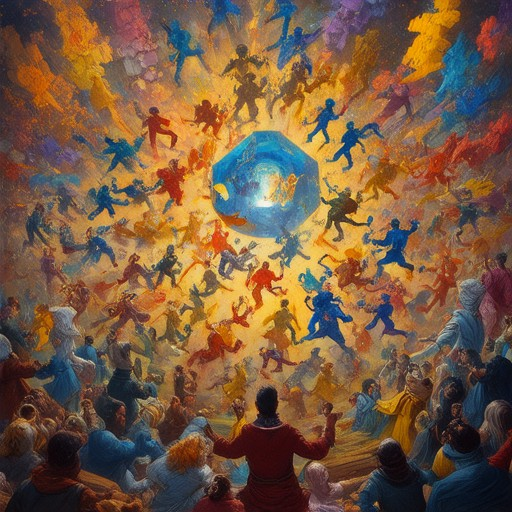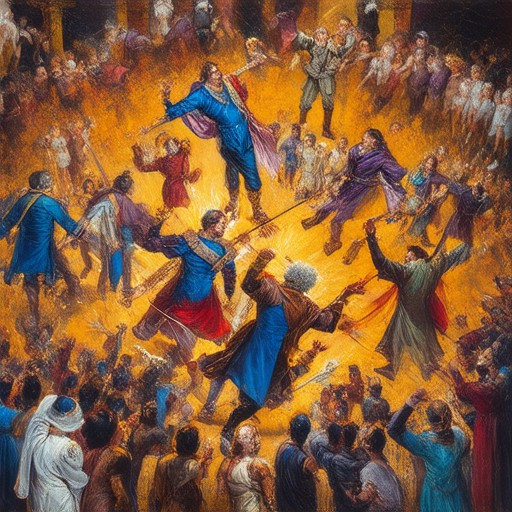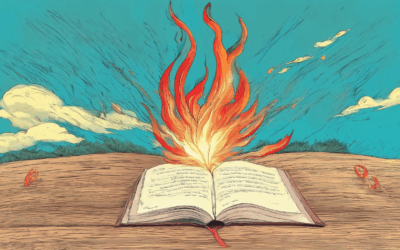Storytelling in fiction is an art form that has the power to transport readers into worlds beyond their imagination, capturing their hearts and minds through compelling narratives. Whether you’re crafting a character-driven narrative or a plot-heavy story, mastering the art of storytelling in fiction requires a deep understanding of its essential elements. From defining what fictional storytelling entails to exploring its various forms, this guide delves into the intricacies of creating captivating stories that resonate long after the final page. Discover how to craft stories that not only entertain but also inspire, leaving readers with lasting memories and a deeper appreciation for the magic of words.

What is Fictional Storytelling?
Fictional storytelling is the act of constructing and sharing imaginative narratives that are not based on real events or people. These stories are often written, told verbally, or expressed through other creative mediums like film or theater. The primary purpose of fictional storytelling is to entertain, inspire, and convey meaningful themes or emotions.
Purpose of Fictional Storytelling
Fiction serves several important functions in society. It allows individuals to explore complex ideas, empathize with different perspectives, and escape from reality. It also fosters creativity, critical thinking, and emotional intelligence in readers and listeners.
Types of Fictional Storytelling
There are many forms of fictional storytelling, including:
- Genres: Such as fantasy, science fiction, romance, mystery, and horror.
- Formats: These can range from novels and short stories to plays, screenplays, and graphic novels.
- Styles: Ranging from realistic to surreal, depending on the author’s intent.
Examples of Fictional Storytelling
Some well-known examples include:
- Novels: Works by authors like J.K. Rowling (“Harry Potter”) or George R.R. Martin (“A Song of Ice and Fire”).
- Short Stories: Stories like Raymond Carver’s “Where Are You Going, Manyo?”
- Plays: Works by playwrights like William Shakespeare or modern playwrights like David Mamet.
Why People Enjoy Fictional Storytelling
People engage with fictional storytelling because it offers:
- Escape: A chance to immerse oneself in a different world.
- Connection: Identification with characters and their experiences.
- Inspiration: Stories that challenge thoughts, beliefs, and perspectives.
By exploring these aspects, fictional storytelling continues to play a vital role in entertainment and personal growth.
What Are the 4 Types of Storytelling?
Storytelling is a powerful tool used across various industries to convey ideas, emotions, and experiences. Below are the four primary types of storytelling:
- 1. Personal Storytelling : This type focuses on sharing personal experiences, thoughts, and feelings. It is often used in blogs, diaries, or social media posts to connect with others on a human level.
- 2. Historical Storytelling : This involves recounting events from the past, often with a focus on historical figures, events, or movements. It is commonly found in textbooks, documentaries, and educational materials.
- 3. Fictional Storytelling : This type is imaginative and creative, involving made-up characters, plots, and worlds. Novels, movies, and video games are common platforms for fictional storytelling.
- 4. Business Storytelling : In this context, stories are used to communicate the mission, values, and goals of a company. They often aim to inspire employees, customers, and stakeholders while fostering a sense of connection and purpose.
Each type of storytelling serves a unique purpose and can be adapted to different audiences and scenarios. Whether personal, historical, fictional, or business-oriented, storytelling remains a versatile medium for communication and engagement.

What are the 5 C’s of storytelling?
- Consistency: The story maintains a logical flow and alignment between its elements, such as setting, characters, and plot.
- Conflict: A central issue or struggle that drives the narrative forward, creating tension and engagement.
- Character: Well-defined and multi-dimensional protagonists and supporting characters who evolve throughout the story.
- Cause: An underlying motivation or event that sparks the story’s progression and provides a purposeful direction.
- Coherence: Logical connection of all story components, ensuring a seamless and believable narrative.

What is Storytelling in a Novel?
Storytelling in a novel is the artful process of crafting a narrative that engages readers emotionally, mentally, and socially. It involves creating a world, developing characters, and plotting events in a way that captivates attention and conveys meaningful themes. The essence of storytelling lies in its ability to connect readers to the human experience, offering insights and fostering empathy through the lens of fiction.
Key Elements of Storytelling in Novels
- Characters : At the heart of every great story are the characters who drive the plot and reveal the narrative’s depth. Each character represents a unique perspective, contributing to the overall tapestry of the story.
- Plot : The sequence of events and conflicts that unfold, propelling the story forward. A well-crafted plot keeps readers invested, maintaining suspense and curiosity.
- Setting : The physical and emotional environment where the story unfolds, playing a crucial role in shaping the narrative’s tone and atmosphere.
- Theme : The underlying message or idea that the story explores, often reflecting universal truths or personal growth.
Purpose of Storytelling
Storytelling serves to entertain, educate, and inspire. In novels, it allows authors to explore complex emotions, moral dilemmas, and societal issues, providing readers with a window into different worlds and perspectives.
Crafting Effective Stories
To master storytelling in novels, consider the following tips:1. Start with a Hook : Begin with a compelling opening that grabs attention and sets the stage for the story.2. Develop Character Depth : Invest time in creating relatable and multifaceted characters who grow and evolve throughout the narrative.3. Build Suspense : Use foreshadowing and unexpected twists to keep readers engaged and curious about the outcome.4. Show, Don’t Tell : Use descriptive language to evoke imagery and emotions rather than simply stating them.5. Edit for Clarity : Refine your prose to ensure the story flows smoothly and resonates with readers on a deeper level.
By mastering these elements, writers can craft stories that resonate long after the final page, leaving readers with lasting impressions and a greater understanding of the human condition. For more insights and tips on novel writing, visit our resource hub .
The Four P’s of Storytelling
The four essential elements of storytelling are often referred to as the 4P’s:
- P lot: This refers to the sequence of events that make up the story, providing a clear narrative arc from beginning to end.
- P eople: These are the characters who drive the plot forward, giving the story depth and personality.
- P laces: The settings where the story unfolds, contributing to the atmosphere and context of the narrative.
- P roblems: The challenges or obstacles faced by the characters, creating tension and propelling the story toward its resolution.
Each of these elements works together to create a cohesive and engaging story, ensuring that the narrative is both compelling and complete.

The 5 Stages of Storytelling
Storytelling is a powerful art form that captivates audiences through its ability to engage, inspire, and connect. Understanding the stages of storytelling can help writers craft compelling narratives. Below, we outline the five primary stages of storytelling and provide insights into how they contribute to the creation of an engaging story.
1. Setup (Exposition)
The first stage of storytelling involves introducing the setting, characters, and the central conflict or problem. This is often referred to as the “exposition.” In this phase, the writer sets the stage for the story by providing necessary background information and establishing the tone. For example, in a story about adventure, the setup might introduce the protagonist, the destination, and the challenges they face.
2. Confrontation (Rising Action)
The second stage is where the protagonist encounters conflicts or obstacles that drive the story forward. This phase is known as the “rising action.” Through this part of the story, the protagonist faces challenges, grows, and develops. For instance, in a coming-of-age story, the protagonist might struggle with bullies, academic pressures, or personal doubts. These challenges propel the story forward and create suspense.
3. Breakdown (Climax)
The climax marks the peak of the story where the protagonist reaches a critical moment. This is often the most intense and transformative part of the narrative. The climax resolves the central conflict and brings the story to a turning point. For example, in a romance story, the climax might involve a proposal, a confrontation, or a life-changing decision that shapes the characters’ futures.
4. Resolution (Falling Action)
Following the climax, the story moves toward its conclusion in the resolution phase. Here, the protagonist deals with the aftermath of the climax and achieves closure. This phase wraps up loose ends and leaves the audience with a sense of completion. In a mystery story, the resolution might reveal the identity of the villain or solve the central puzzle.
5. Aftermath (Denouement)
The final stage of storytelling is the aftermath, often referred to as the denouement. This phase occurs after the main conflict has been resolved, allowing the characters and the story to return to a state of normalcy. However, the aftermath can also leave lasting impacts on the characters and the story’s universe. For example, in a war story, the aftermath might show the protagonist rebuilding their life or dealing with the scars of battle.
Examples of Storytelling Across Genres
- Literary Fiction : In works by James Whitfield Thomson, the storytelling often delves deeply into the emotional journey of characters, exploring themes of identity, loss, and redemption. His novels masterfully navigate through these stages, creating immersive worlds that resonate with readers.
- Commercial Fiction : A popular science fiction novel might use these stages to build suspense and keep readers hooked. The setup introduces a futuristic setting, the confrontation centers around a space mission gone wrong, the climax reveals a hidden alien technology, and the resolution ties up the plot while leaving room for sequels.
By understanding and mastering these stages, writers can craft stories that captivate audiences and leave a lasting impression. Whether you’re penning a heartfelt tale or an epic adventure, the five stages of storytelling provide a roadmap for creating engaging narratives. Explore more tips and insights on storytelling at James Whitfield Thomson , where authors and readers alike find inspiration and practical advice.
Conclusion
Understanding the stages of storytelling is essential for anyone looking to create impactful narratives. By mastering the setup, confrontation, climax, resolution, and aftermath, writers can craft stories that resonate with readers and leave a lasting legacy. Visit James Whitfield Thomson to discover more resources and techniques for perfecting your storytelling skills.





0 Comments